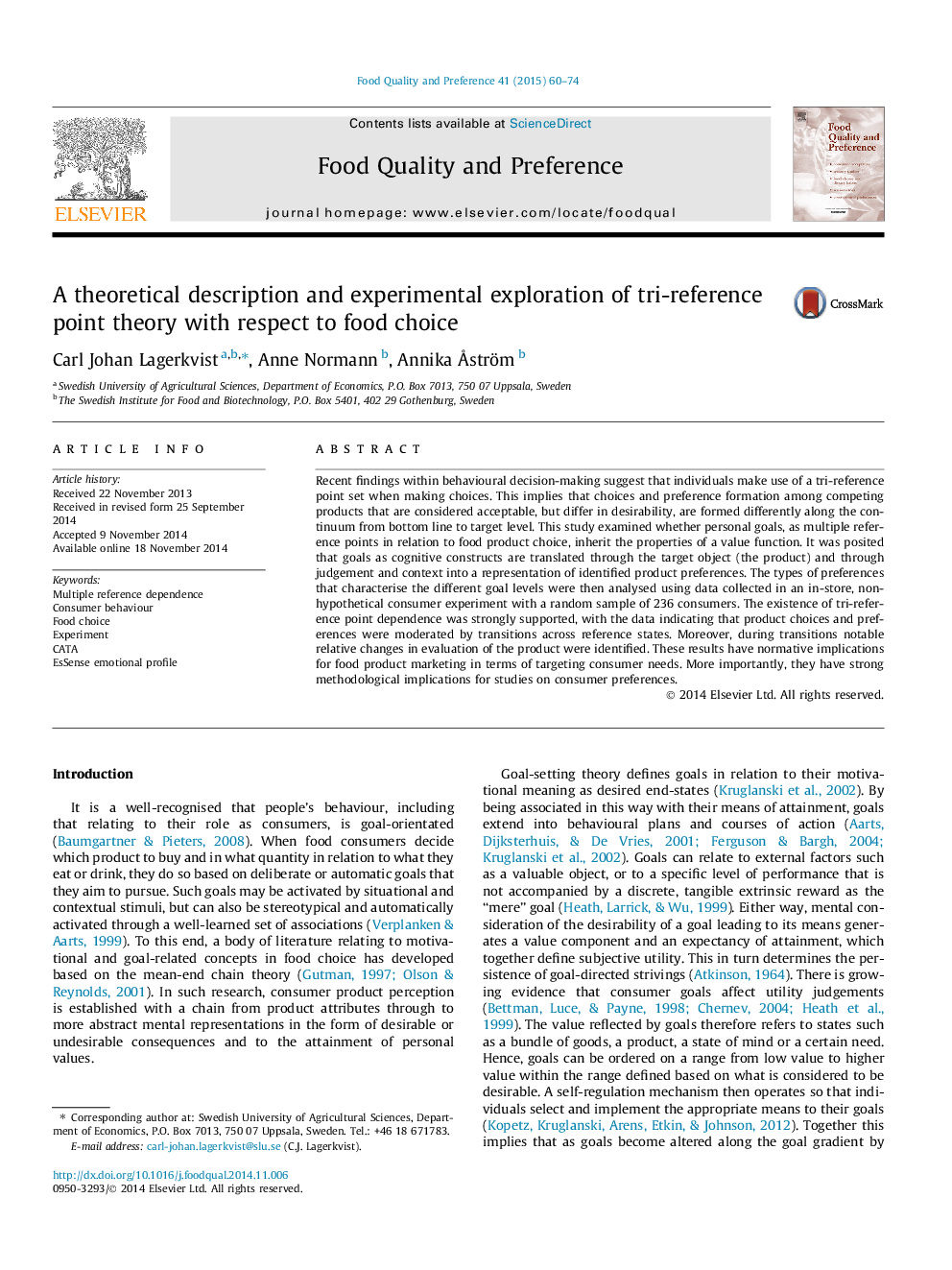| Article ID | Journal | Published Year | Pages | File Type |
|---|---|---|---|---|
| 4317012 | Food Quality and Preference | 2015 | 15 Pages |
•An in-store experiment was used to examine multiple reference dependence.•Reference points were defined in relation to aspiration levels.•A CATA approach provided data for a trinity matrix conceptualisation of bread.•Product choices were moderated by transitions to other reference states.•In such transitions notable relative changes in the conceptualisation of the product were identified.
Recent findings within behavioural decision-making suggest that individuals make use of a tri-reference point set when making choices. This implies that choices and preference formation among competing products that are considered acceptable, but differ in desirability, are formed differently along the continuum from bottom line to target level. This study examined whether personal goals, as multiple reference points in relation to food product choice, inherit the properties of a value function. It was posited that goals as cognitive constructs are translated through the target object (the product) and through judgement and context into a representation of identified product preferences. The types of preferences that characterise the different goal levels were then analysed using data collected in an in-store, non-hypothetical consumer experiment with a random sample of 236 consumers. The existence of tri-reference point dependence was strongly supported, with the data indicating that product choices and preferences were moderated by transitions across reference states. Moreover, during transitions notable relative changes in evaluation of the product were identified. These results have normative implications for food product marketing in terms of targeting consumer needs. More importantly, they have strong methodological implications for studies on consumer preferences.
